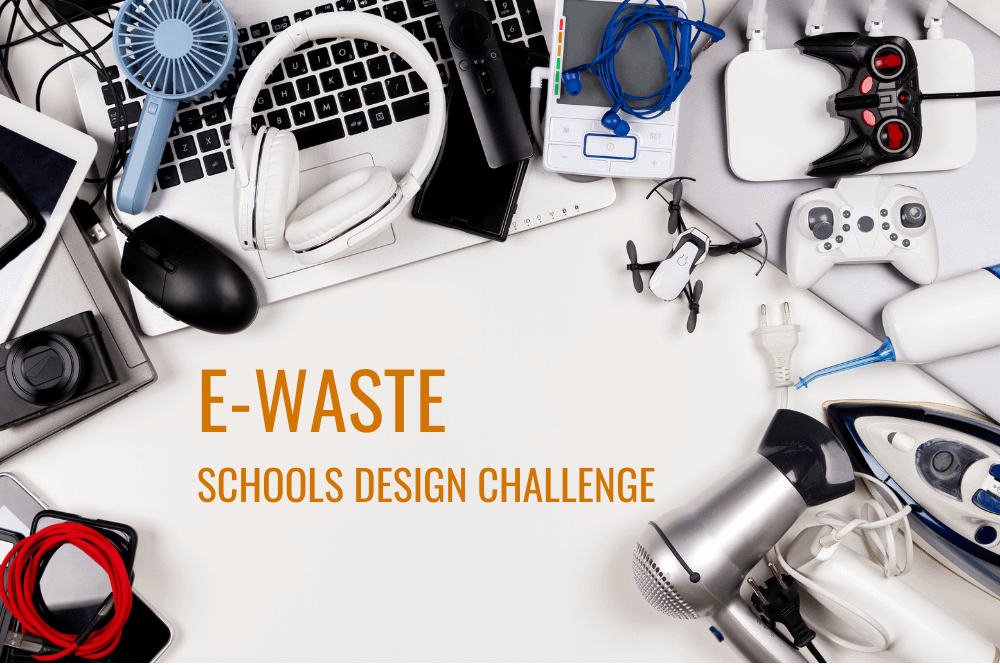
E-waste Schools Design Challenge
Tackling E-waste With Andover Schools and Stannah
How might we tackle e-waste ( the waste generated from electrical and electronic products), the fastest-growing domestic waste in the world?
The E-waste Design Challenge launched on International E-waste Day, 14th October 2022, in collaboration with Stannah and three secondary schools in Andover, Hampshire. The 8-week design challenge began with a ‘launch event’, at each of the schools, where 200+ students were invited to take part in exploring e-waste.
CULTIVATE
The students were encouraged to get curious about e-waste, by undertaking a simple audit at home, or in school, and then working together to come up with ideas and design concepts.
“ E-waste, the world’s fastest-growing domestic waste stream, fueled mainly by higher consumption rates of electric and electronic equipment, short life cycles, and few options for repair. Only 17.4 per cent of 2019’s e-waste was collected and recycled. This means that gold, silver, copper, platinum and other high-value, recoverable materials conservatively valued at US $57 billion – a sum greater than the Gross Domestic Product of most countries – were mostly dumped or burned rather than being collected for treatment and reuse.” – The Global E-waste Monitor 2020
COLLABORATE
Working in teams the students investigated the different types of e-waste they had discovered unused or broken around their homes or school – which included; cables, old mobile phones, smartphones, tablets, laptops, gaming consoles, personal grooming products (like hair dryers and curling tongs) and much much more!
After choosing the e-waste area that sparked their interest, the teams researched it in more detail and then generated lots of ideas on ways to tackle it. Then deciding on their favourites to develop into concepts. Some even created some prototypes to test and share. See some examples from Winton Community Academy below.

INNOVATE
Each school selected a number of students to represent them, and 10 teams came together to share their ideas with each other, and representatives from Stannah, on 12th December at John Hanson Community School.
Ideas ranged from information campaigns, local recycling collections, and engaging with the manufacturers of electronic products, to repurposing items for protest art and Christmas lights. You can get a taste of some of the other themes in the summary infographic below.
We would like to thank the wonderful people at Stannah, especially Mike Newman for the opportunity to collaborate once again, and to the Joseph Stannah Foundation for supporting this initiative. A special mention should also go to the amazing Design & Technology teachers, Max Lee at Winton Community Academy, Donna Robertson at Harrow Way Community School, and Sinead Woodley at John Hanson Community School for their encouragement and enthusiasm in guiding the students through the challenge.
If you’d like to know more about our work with schools, and our efforts to raise awareness around climate change, please contact us for more information.



